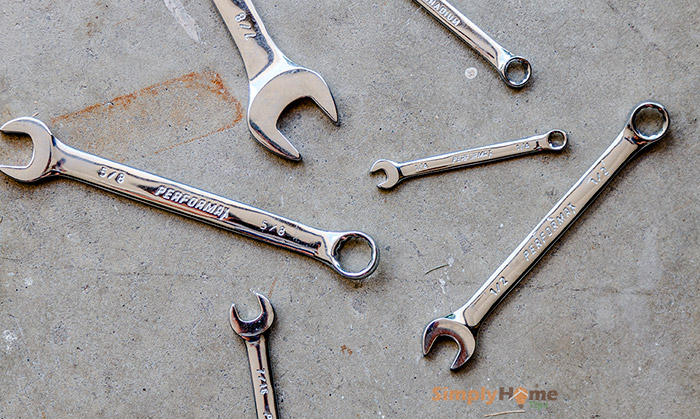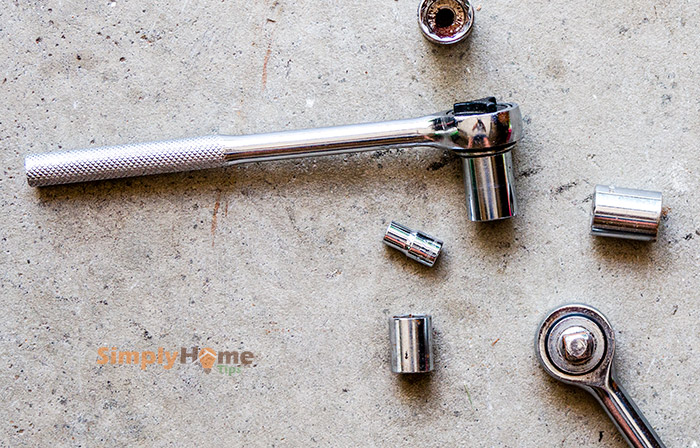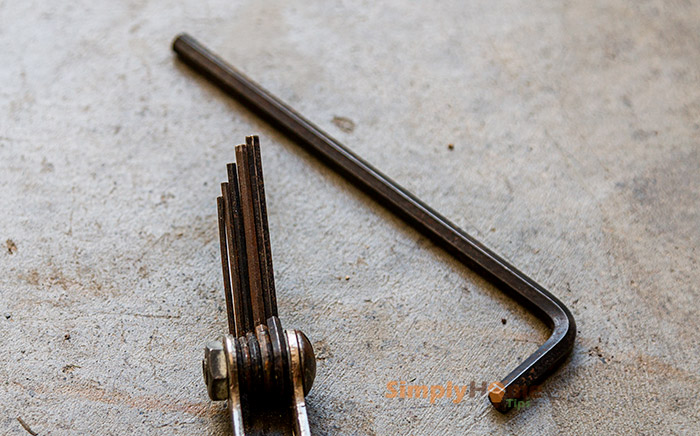A wrench is among the most essential and necessary tools you need on a typical day. It comes designed either as male or female, with the male inserted at the head of nuts or bolts and the female coming with fitting sockets.
They are both competent in the tightening and loosening of the bolts and the nuts.

The wrenches also come in classes depending on the designs that they take.
The categories include:
- Key – They are designed for specialized use and often have the appearance of sockets. The sockets are either T-shaped with tips that are either male or female or as keys with no teeth. They include the window cranks, Allen wrench, and bottle openers.
- Spanner – These wrenches have hooks, with some having pins different from the standard end. They are often used to turn spanners.
- Socket – These are wrenches that have cylindrical sockets with handles attaching to them. The handle’s orientation allows the wrench to either turn horizontally or vertically after fitting on the head of the items.
Types of Wrenches
1. Adjustable Wrench
It is among the wrenches that are more popular and is also known as the crescent wrench. The design of the wrench has one end open while the other end serves mostly as the handle. The free end has a screw with a spiral appearance integrated to open and close the crescent when turned in either direction.

It is much thicker, and so it requires much more space for it to function. The benefit of this wrench is that you can use it ideally in most situations suited for other wrenches such as the open-end wrench and the combination wrench. It is beneficial for household jobs like loose plumbing or a leaky faucet.
2. Open-End Wrench
It is hard to miss this wrench in any toolbox, as it is prevalent. The open-end wrench comes designed with two ends that are U-shaped. The ends have different sizes, with one being more prominent than the other.

It is useful in tightening or loosening the nuts and bolts that are hard to reach due to their slender design. You can attach it to the target nut or bolt either horizontally or vertically, but have the disadvantage of making the edges of a nut to be round.
3. Socket Wrench
It is one of the best wrenches that you can use when tightening or loosening the bolts and the nuts. It is easy to use as it integrates a ratchet mechanism in its operations, allowing you to fasten or unfasten the bolts and nuts without having to lift the wrench. The socket wrench comes in different drive sizes, including 1”, ½”, 3/8”, and ¼”.
The wrench allows you to fit its socket onto the drive then turn it to fasten or loosen. The advantage is that you can use short strokes when turning the wrench, and in any case, it has an obstacle in its path; it allows you to reverse it. You can use it in home repairs like tightening the toilet’s bolts and nuts.
4. Ratchet Wrench
This wrench is unique in the way its design to function. It offers you a grip that can turn up to 360 degrees with a long-term handle to give the proper leverage when working. It gives you the benefit of using the handle to reverse the direction while the other end tightens or loosens the fasteners.

This wrench is effective in removing the bolts and nuts that may be rusted and hard to remove. It does not slip as it has a socket that attaches itself to the bolt or nut. They are useful in automotive work and in cases where spaces of operation are limited, and you need the job to get done fast.
5. Pipe Wrench
The pipe wrench is mostly functional in the fastening of those pipes that have no flat sides. It is therefore preferred in plumbing work since it is adjustable with jaws that come serrated. This serration allows the wrench to have a better grip on metal and PVC pipes for effectiveness.

The build and design of this wrench is not suitable for fasteners, but it is beneficial for plumbing and industrial machinery. The wrench may cause damage to the fasteners and the tool. Therefore, you should try as much as possible to avoid using it on those fasteners with flat sides.
6. Spanner Wrench
The spanner wrench comes with a curved C-shaped end on one side with the other serving as the handle. The C-shaped end has pins that you can use on different items, including the retainer rings and screws.
The spanner wrench is useful in providing a mechanical grip when you apply torque to turn an object.
7. Torque Wrench
This wrench makes use of a manual or, in other instances, an electronic mechanism to give the appropriate torque. It is instrumental in the tightening and loosening of bolts and nuts. It also allows you to get accurate measurements and settings, especially in situations where accuracy is crucial.
This wrench allows you to conduct heavy-duty automotive maintenance. You can also put the torque to use when performing industrial work like repairing of water mains. You can also use this wrench in the repairs of bicycles and other equipment used practices such as farming.
8. Lug Wrench
The lug wrench comes with large handles with four sockets designed in four different directions. This X-shaped lug is also known as the spider wrench and comes with an extended length to produce more pressure when tightening or loosening the nuts.
The wrench also comes in an L-shape design with a socket at one of the ends.
This wrench is mostly used with the automobiles to tighten nuts on the wheel hence the name wheel brace.
9. Allen Wrench
The Allen wrench comes in hexagonal shapes. It is an L or T-shaped metal piece with one of the limbs functioning as the wrench’s handle. The wrench design allows it to fit into the recess heads of bolts and screws in the design of hexagons.

This wrench mostly occurs either in the SAE size or the Metric size. You can effectively use this wrench in the repair of furniture, fix bicycles, and, in other instances, to pick a lock.
10. Monkey Wrench
The monkey wrench is an adjustable wrench that comes with smooth jaws and a round handle. The head is thick and adjustable for different sizes and convenient for heavy-duty jobs due to its sturdy design.
This wrench is most commonly used to tighten and loosen nuts and bolts while conducting home repairs and repairing cars. They are also useful in fixing engines in tractors, motorcycles, and lawnmowers.
Leave a Reply